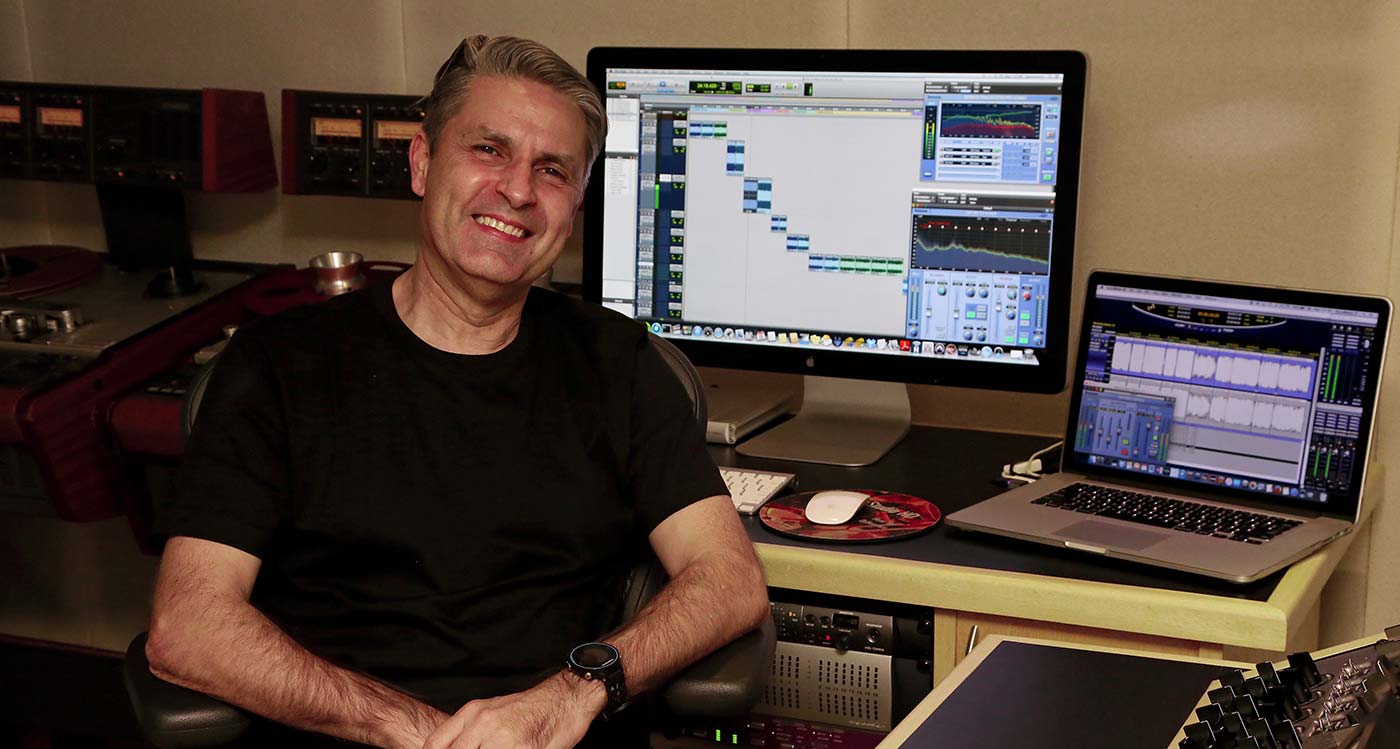Carlos Freitas: Mastering Excellence with Sonnox Plug-ins at Classic Master Studios
In the heart of São Paulo, Brazil, where every day feels like a Monday and every night a Friday, lies Classic Master Studios, the brainchild of Chief Mastering Engineer Carlos Freitas. With over 30 years in the industry and multiple Latin Grammy nominations for Best Engineered Album, Carlos has built a reputation for his unique mastering style. Renowned Brazilian artists like Caetano Veloso, Gilberto Gil, João Gilberto, and Djavan, along with international stars, trust him to deliver pristine masters. We sat down with Carlos to discuss his journey, his approach to mastering, and how Sonnox plug-ins play a pivotal role in his workflow.

The Journey to Mastering
You’ve been a recording, mix, and live sound engineer. What ultimately led you to mastering?
After years of recording and mixing albums in the studio, I started recording live shows in the early nineties. I would transfer everything to digital using Digidesign’s Sound Tools and send the digital files to clients. Around 1992, I began experimenting with digital processing—EQs, compressors, etc.—and realized it was a new frontier to explore. That’s when I decided to set up my own mastering studio, Classic Master, in 1993. It’s been over 22 years now, and I’ve been continuously refining my mastering techniques ever since.
The Impact of São Paulo’s Music Scene
How does the São Paulo music scene influence your work?
São Paulo is Brazil's economic and cultural hub, so it naturally influences the projects that come through our doors. We master many high-profile albums made in São Paulo, but our reach extends far beyond. Thanks to digital workflows, we receive projects from across Brazil and around the world, including Latin America, Europe, and Korea. Many of my clients are drawn to the distinctive sound of Brazilian albums mastered here at Classic Master, and we strive to offer our services globally.
Mastering Workflow and Studio Setup
Tell us about your studio setup and approach to mastering.
I use a hybrid system that combines analog and digital hardware and software. My setup centers around the Maselec MTC-1 Mastering Console, managing gear like Maselec and Manley equipment, B&W Speakers, Lavry Gold Converters, and an Antelope Master Clock. I also use TC M6000 and TM9, alongside various plug-ins in the final stages on SoundBlade Workstation.
I have a collection of tube and FET compressors and EQs inserted into my mastering chain, but for limiting, I prefer to stay in the digital realm. The Sonnox Limiter is my top choice for this task. Before starting a session, my assistant Natalia organizes the entire album for me to listen to straight through in sequence using Pro Tools. At this stage, she cleans up any noise, and I make initial EQ adjustments digitally. Afterward, I experiment with different combinations of analog gear to find the best mastering strategy, with all processing done in the analog domain, except for the Limiter, which is digital.
Sonnox Plug-ins in the Mastering Chain
Which Sonnox plug-ins do you rely on most and why?
I regularly use the Sonnox Oxford EQ, Limiter, Restore, Pro-Codec, and Codec Toolbox. The Oxford EQ is my go-to at the initial stage of mastering in Pro Tools when making EQ corrections. I appreciate its great quality, transparency, precise bands, and especially the high-pass filter, which is very efficient.
The Oxford EQ is my go-to at the initial stage of mastering in Pro Tools when making EQ corrections.
The Sonnox Limiter is the final step in my mastering process because it allows me to achieve impressive punch and volume without distorting the signal, which my clients love. For noise removal, I sometimes use the Sonnox Restore Suite to tackle issues like hums or deeper restorations on old vinyl records. Its simplicity and real-time operation make it a fantastic tool.
The Sonnox Fraunhofer Pro-Codec is essential when creating references and final audio formats like MFiT (Mastered for iTunes), MP3, and AAC. It includes the Apple Codec (iTunes+), which lets me hear exactly how the audio will be affected before creating the final versions, allowing me to double-check the encoder/decoder process both aurally and visually.
Unique Features of Sonnox Plug-ins
Are there any features in Sonnox plug-ins that you find unique?
The transparency of the Sonnox Limiter is unmatched. Clients are often amazed when I add up to 6dB to the final volume without any audible degradation. That kind of clean gain is hard to find in other digital limiters.
Mastering for iTunes with Fraunhofer Pro-Codec
You were the first to bring Mastering for iTunes to Brazil. How do you use the Fraunhofer Pro-Codec in your mastering process for MFiT?
The Sonnox Fraunhofer Pro-Codec is fundamental to my iTunes (MFiT) mastering process. Once I finish mastering for CD (PMCD), I insert the Pro-Codec in a new session in SoundBlade. I analyze the differences between the input and output signals, which lets me and my clients hear exactly how the final digital master will sound on iTunes. This tool saves me a lot of time and ensures the highest quality for the final product.
Overall, Sonnox provides me with essential tools that are critical in my mastering process. Their plug-ins not only save time but also maintain the high standards that my clients expect from Classic Master.
